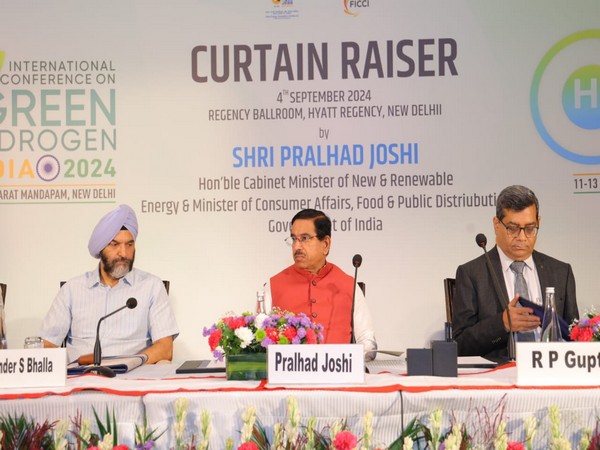New Delhi [India], September 4 (ANI): India is set to organise the second edition of the International Conference on Green Hydrogen, scheduled for September 11-13 to be held at the Bharat Mandapam.
A curtain-raiser ceremony was held on Wednesday, where Minister for New and Renewable Energy Pralhad Joshi highlighted the conference’s significance in advancing India’s green hydrogen ecosystem.
“We are committed to making India a world leader in this crucial sector,” the minister said. “We are sending a clear message about India’s aspirations for a leadership position in clean energy and assert its emerging dominance in the green hydrogen sector.”
Through the National Green Hydrogen Mission announced last year, India expects to position itself as a hub of green hydrogen and its derivatives. The conference will provide a platform for showcasing products, services, and technologies to a global audience.
“2000 registrations have already taken place, and we are expecting over 6000 registrations from international and national scientists, and 120+ exhibitors,” the minister added.
Since the inaugural edition, the Indian green hydrogen mission has achieved significant progress — awarding a capacity of 3000 MW for electrolyzer manufacturing; 4,12,000 tonnes per annum for green hydrogen production, issuing tenders for 450,000 tonnes per annum of green hydrogen capacity, and 739,000 tonnes per annum of green ammonia production.
With a target of establishing 5 million tonnes of annual green hydrogen production capacity by 2030, the green hydrogen mission represents a significant step towards realising India’s ambitions in the hydrogen economy.
India meets a sizable portion of its energy needs through fossil fuels, and various renewable energy sources, including green hydrogen, are seen as an avenue to reduce the dependence on conventional sources of power. Green energy for climate mitigation is not just a focus area for India, but globally it has gained momentum.
At COP26 held in 2021, India committed to an ambitious five-part “Panchamrit” pledge. They included reaching 500 GW of non-fossil electricity capacity, generating half of all energy requirements from renewables, reducing emissions by 1 billion tonnes by 2030.
India as a whole also aims to reduce the emissions intensity of GDP by 45 per cent. Finally, India commits to net-zero emissions by 2070. (ANI)
Disclaimer: This story is auto-generated from a syndicated feed of ANI; only the image & headline may have been reworked by News Services Division of World News Network Inc Ltd and Palghar News and Pune News and World News
HINDI, MARATHI, GUJARATI, TAMIL, TELUGU, BENGALI, KANNADA, ORIYA, PUNJABI, URDU, MALAYALAM
For more details and packages











